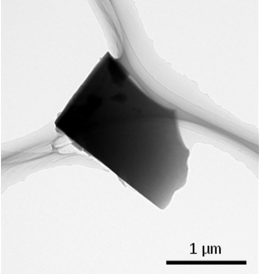2022-10-14 アメリカ・ローレンスリバモア国立研究所(LLNL)
研究チームは、二酸化炭素(CO2)を用いて固体電解質膜を焼結(液化するほど溶かさず、熱や圧力で固体の塊を圧縮して形成)することで、固体電池の製造における共通の課題を克服することを発見した。
このレーザー焼結技術により、拡張性があり、低コストで高エネルギー密度の固体リチウム(Li)電池が得られ、国家安全保障上のミッションにおけるエネルギー貯蔵のニーズを高めることができる。このレーザー技術は、ポリマー、セラミックス、金属の積層造形など、他の分野にも応用することができる。
従来の炉焼結や最近開発された火花プラズマ焼結、ホットプレス、急速ジュール加熱とは異なり、新しいレーザー焼結法は、超高速焼結によるLi損失の低減、膜厚を大幅に低減する独自の異方性収縮挙動、ポイントスキャン戦略による波状の表面トポロジー(電極材料との3次元界面接触)を少なくとも3つの特徴として備えている。
<関連情報>
- https://www.llnl.gov/news/new-method-sheds-light-solid-state-battery-fabrication
- https://pubs.acs.org/doi/10.1021/acsenergylett.2c01630
ガーネット型固体電解質のCO2レーザー焼結 CO2 Laser Sintering of Garnet-Type Solid-State Electrolytes
Erika Ramos, Allison Browar, John Roehling and Jianchao Ye
ACS Energy Letters Published:September 14, 2022
DOI:https://doi.org/10.1021/acsenergylett.2c01630

Abstract
The processing of garnet-type solid-state electrolytes remains challenging as densification conventionally requires high sintering temperatures and long processing times, which can result in severe Li loss, the formation of secondary phases, and thus high porosity and low ionic conductivity. Here, we report an ultrafast sintering method based on CO2 laser scanning with the assistance of a heating stage. We demonstrate the rapid densification of low-packing-density Li6.4La3Zr1.4Ta0.6O12 (LLZTO) films, which are difficult to densify by conventional furnace sintering methods. This unique approach has three fingerprint characteristics: (1) mitigation of Li loss through ultrafast sintering (dwelling time ≪1 s); (2) a unique anisotropic shrinkage behavior that greatly reduces film thickness; (3) wave-like surface topology from point scanning strategy that enables 3D interfacial contacts with electrode materials. Herein, highly dense (95.68%) and highly conductive (0.26 mS·cm–1 at 25 °C) LLZTO films are obtained through CO2 laser sintering. This work provides a unique, scalable, and widely applicable ultrarapid laser sintering technique to overcome the difficulties associated with classic methods for the integration of SSEs for practical all-solid-state Li-metal battery applications.



